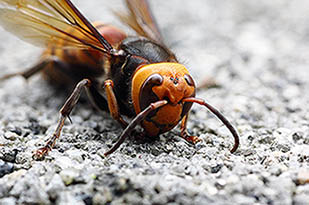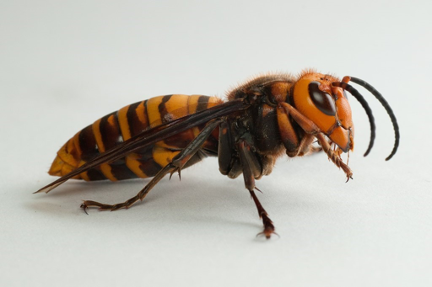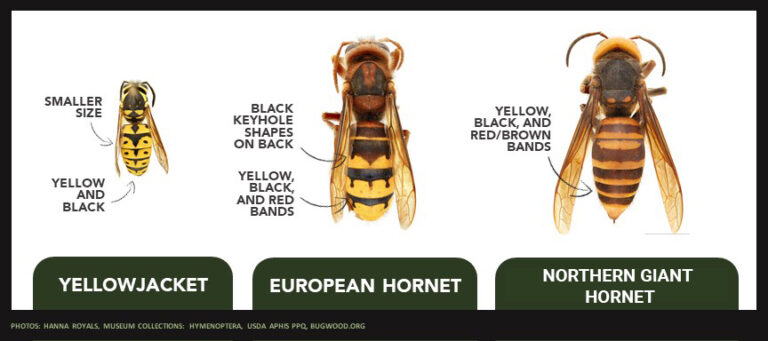
By: David Dutkiewicz, ISC Entomology Technician
If you’ve been following the news this summer, you’re sure to have seen mention of murder hornets.
After isolated discoveries of this invasive species in British Columbia and Washington state, news about the northern giant hornet has taken North America by storm — with good reason! Here’s the scoop:
Northern giant hornets, also known as “murder hornets” and formerly known as Asian giant hornets, are one of the world’s largest hornet species. Queen northern giant hornets grow to a size of five centimetres and have a wingspan of 7.5 centimetres.
In Canada, the northern giant hornet was first discovered in the Nanaimo, BC, region in September 2019. Researchers aren’t sure how the hornets got into Canada, but it’s possible they arrived from Asia through packaging material or hiding under imported gardening pots.
The BC government, Canadian Food Inspection Agency (CFIA) and local beekeepers were able to round up the population and destroy the nest in 2019. In May 2020, there was another discovery of the northern giant hornet in Langley, BC, approximately 100 kilometres away from the Nanaimo detection. Local beekeepers and the CFIA were once again able to destroy this nest and are continually monitoring for new sightings. Since northern giant hornets live underground in tunnels or spaces under rocks and homes, it can be challenging to find them early.
In Washington, where northern giant hornets were also found in 2019 and 2020, researchers are using infrared technology to detect underground hornet nests. The temperature of their nests runs about 26 to 30 C, making them hot spots on a cold morning. Citizen scientists are using traps with sweet juices and nectar in their gardens to try and catch northern giant hornets that may be hiding.
Many assume that the name murder hornet comes from its interactions with humans. Northern giant hornets do have a large stinger and deliver one of the most painful stings known to humans. However, murder hornets were given that name to describe their predatory behaviour toward North American honeybees.
In the northern giant hornet’s native range throughout Southern Asia, honeybees have co-evolved with northern giant hornets and have strategies to expel or kill them when they enter the hive. In North America (or Europe where they originated), honeybees haven’t experienced that same co-evolution and have no defenses against giant hornets.
In Washington, northern giant hornets are a major concern for local beekeepers. This invasive species has an aggressive hunting strategy. Drone workers roam the landscape looking for suitable wasp or beehives, which they mark with pheromones that larger groups of northern giant hornets can then follow. This hunting strategy is important for the survival of northern giant hornet larvae, which requires a high protein diet. Adults kill and eat other insects that they can then regurgitate for their young back in the nest. In a few hours, 20 to 40 northern giant hornets can kill up to 30,000 bees. Northern giant hornets have not been reported targeting honeybee hives in Canada, but this could be because only a very low number of unestablished populations have been found in BC.
Domestic honeybees and wild bees in Canada are integral to food production and healthy ecosystems. The best way we can help protect our pollinators is to keep watch for northern giant hornets and report suspected sightings.
While these hornets have only been found (and eradicated) on the West Coast of Canada to date, climate models show that southern Canada is well-suited to host them should they get past the Rocky Mountains or be accidentally introduced. With all invasive species, and especially northern giant hornets, community members can form an invaluable and united front, and cover a lot more ground than researchers alone can. Finding and reporting invasive species as soon as they arrive is incredibly important in ensuring a response can get underway quickly and efficiently. Check out common look-alikes in the photo below and visit the Invasive Species Centre website to find reporting options for your province or territory.


